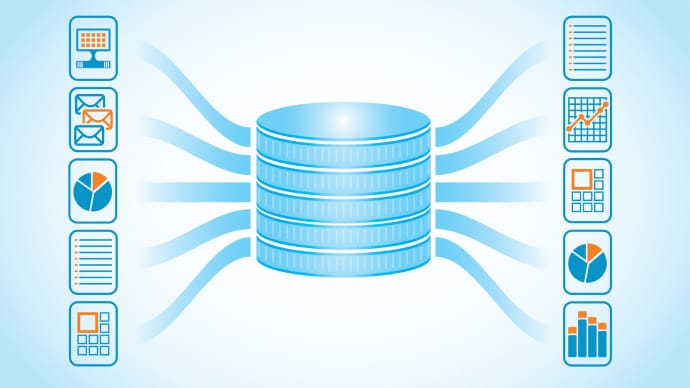
AWS Certified Database - Specialty: AWS Certified Database - Specialty
PDFs and exam guides are not so efficient, right? Prepare for your Amazon examination with our training course. The AWS Certified Database - Specialty course contains a complete batch of videos that will provide you with profound and thorough knowledge related to Amazon certification exam. Pass the Amazon AWS Certified Database - Specialty test with flying colors.

Curriculum for AWS Certified Database - Specialty Certification Video Course
| Name of Video | Time |
|---|---|
 1. Purpose Built Databases |
4:00 |
| Name of Video | Time |
|---|---|
 1. Types of data |
5:00 |
 2. Relational databases |
6:00 |
 3. Non-relational databases |
7:00 |
| Name of Video | Time |
|---|---|
 1. Amazon RDS overview |
4:00 |
 2. RDS pricing model |
1:00 |
 3. Instance type, storage type and storage auto scaling for RDS |
4:00 |
 4. RDS parameter groups |
4:00 |
 5. RDS option groups |
2:00 |
 6. RDS - Hands on |
14:00 |
 7. RDS security - Network |
3:00 |
 8. RDS security - IAM |
6:00 |
 9. Rotating RDS DB credentials |
1:00 |
 10. Windows authentication in RDS for SQL Server |
3:00 |
 11. RDS encryption in transit and at rest |
5:00 |
 12. RDS backups |
4:00 |
 13. Copying and sharing RDS snapshots |
2:00 |
 14. How to encrypt an unencrypted RDS database |
2:00 |
 15. DB restore options in RDS |
4:00 |
 16. Exporting RDS DB snapshot to S3 |
2:00 |
 17. RDS backup and restore - Hands on |
5:00 |
 18. RDS Multi-AZ deployments and read replicas |
9:00 |
 19. Read replica use cases |
1:00 |
 20. Promoting a read replica to a standalone DB instance |
3:00 |
 21. RDS Multi-AZ failover and replica promotion - Demo |
14:00 |
 22. Enabling writes on a read replica |
1:00 |
 23. RDS read replica capabilities |
2:00 |
 24. RDS Second-tier replicas and replica promotion - Demo |
7:00 |
 25. Cross-region read replicas in RDS |
1:00 |
 26. RDS replicas with an external database |
2:00 |
 27. RDS disaster recovery strategies |
6:00 |
 28. Troubleshooting replica issues in RDS |
6:00 |
 29. Performance hit on new read replicas |
2:00 |
 30. Scaling and sharding in RDS |
3:00 |
 31. RDS monitoring |
4:00 |
 32. RDS event subscriptions, recommendations and logs |
5:00 |
 33. Exporting RDS logs to S3 |
2:00 |
 34. RDS Enhanced Monitoring |
2:00 |
 35. RDS Performance Insights |
10:00 |
 36. CloudWatch Application Insights |
1:00 |
 37. RDS on VMware |
1:00 |
 38. RDS - Good things to know |
2:00 |
 39. Aurora overview |
4:00 |
 40. Aurora architecture |
8:00 |
 41. Aurora Parallel Query |
3:00 |
 42. Aurora Serverless |
5:00 |
 43. Data API for Aurora Serverless |
2:00 |
 44. Aurora multi-master |
2:00 |
 45. Aurora cross region replicas and Aurora Global database |
2:00 |
 46. Reliability features in Aurora |
3:00 |
 47. Aurora pricing model |
3:00 |
 48. Aurora security - Network, IAM and encryption |
3:00 |
 49. Parameter groups in Aurora and Aurora Serverless |
4:00 |
 50. Creating an Aurora database - Hands on |
9:00 |
 51. Creating an Aurora Serverless database - Hands on |
2:00 |
 52. Using Data API with Aurora Serverless database - Hands on |
2:00 |
 53. Scaling options in Aurora |
5:00 |
 54. Aurora monitoring and advanced auditing |
4:00 |
 55. Monitoring in RDS and Aurora - Demo |
4:00 |
 56. Exporting Aurora logs |
1:00 |
 57. Database activity streams in Aurora |
1:00 |
 58. Troubleshooting storage issues in Aurora |
3:00 |
 59. Aurora benchmarking |
1:00 |
 60. Exporting data from Aurora into S3 |
2:00 |
 61. Aurora backups and backtracking |
4:00 |
 62. Aurora backups vs snapshots vs backtrack |
2:00 |
 63. Aurora backup, restore, PITR and backtrack - Demo |
3:00 |
 64. Cloning databases in Aurora |
3:00 |
 65. Aurora failovers |
4:00 |
 66. Cluster Cache Management (CCM) in Aurora PostgreSQL |
3:00 |
 67. Simulating fault tolerance or resiliency in Aurora |
6:00 |
 68. Simulating failovers in Aurora - Demo |
1:00 |
 69. Aurora failover priorities in action - Demo |
10:00 |
 70. Fast failover in Aurora PostgreSQL |
6:00 |
 71. Cluster replication options for Aurora MySQL |
5:00 |
 72. Aurora replicas vs RDS MySQL replicas |
3:00 |
 73. Comparison of RDS deployments |
5:00 |
 74. How to invoke Lambda functions from Aurora MySQL |
2:00 |
 75. How to load data from S3 into Aurora MySQL |
2:00 |
 76. RDS / Aurora – Good things to know |
3:00 |
| Name of Video | Time |
|---|---|
 1. DynamoDB overview |
3:00 |
 2. Working with DynamoDB - Hands on |
11:00 |
 3. DynamoDB basics |
7:00 |
 4. DynamoDB consistency |
5:00 |
 5. DynamoDB pricing model |
6:00 |
 6. DynamoDB throughput |
4:00 |
 7. Calculating capacity units |
4:00 |
 8. DynamoDB burst capacity and adaptive capacity |
6:00 |
 9. DynamoDB local secondary index (LSI) |
4:00 |
 10. DynamoDB global secondary index (GSI) |
3:00 |
 11. Choosing between LSI and GSI |
3:00 |
 12. Simple design patterns with DynamoDB |
4:00 |
 13. Errors and exceptions in DynamoDB |
3:00 |
 14. DynamoDB partitions |
5:00 |
 15. DynamoDB partition behavior example |
6:00 |
 16. Scaling options in DynamoDB |
4:00 |
 17. DynamoDB scaling and partition behavior |
4:00 |
 18. DynamoDB best practices |
4:00 |
 19. DynamoDB best practices (contd.) |
4:00 |
 20. Large object patterns and table operations |
5:00 |
 21. DynamoDB accelerator (DAX) |
3:00 |
 22. DAX architecture |
2:00 |
 23. DAX operations |
4:00 |
 24. Implementing DAX - Hands on |
6:00 |
 25. DynamoDB backup and restore |
7:00 |
 26. DynamoDb backup and restore - Hands on |
3:00 |
 27. Continuous backup with PITR |
2:00 |
 28. Continuous backup with PITR - Hands on |
4:00 |
 29. DynamoDB encryption |
4:00 |
 30. DynamoDB streams |
3:00 |
 31. DynamoDB TTL |
2:00 |
 32. DynamoDB TTL - Hands on |
5:00 |
 33. TTL use cases |
1:00 |
 34. DynamoDB global tables |
5:00 |
 35. DynamoDB global tables - Hands on |
6:00 |
 36. Fine-grained access control and Web-identity federation in DynamoDB |
6:00 |
 37. CloudWatch contributor insights for DynamoDB |
1:00 |
| Name of Video | Time |
|---|---|
 1. Redshift overview |
3:00 |
 2. Creating a Redshift cluster - Hands on |
9:00 |
 3. Redshift architecture |
2:00 |
 4. Loading data into Redshift |
3:00 |
 5. Loading data from S3 into Redshift - Hands on |
7:00 |
 6. More ways to load data into Redshift |
2:00 |
 7. Redshift Spectrum |
3:00 |
 8. Querying S3 data with Redshift Spectrum - Hands on |
8:00 |
 9. Redshift federated query |
1:00 |
 10. Star schema in data warehouses |
2:00 |
 11. Redshift fundamentals |
9:00 |
 12. Redshift Workload Management (WLM) |
3:00 |
 13. Redshift concurrency scaling |
2:00 |
 14. Redshift scaling |
2:00 |
 15. Redshift backup, restore and cross-region snapshots |
3:00 |
 16. Redshift Multi-AZ deployment alternative |
4:00 |
 17. Redshift availability and durability |
2:00 |
 18. Redshift security |
3:00 |
 19. Enhanced VPC routing in Redshift |
4:00 |
 20. Redshift monitoring |
3:00 |
 21. Redshift pricing |
1:00 |
 22. Redshift related services - Athena and Quicksight |
3:00 |
 23. AQUA for Redshift |
2:00 |
| Name of Video | Time |
|---|---|
 1. ElastiCache overview |
5:00 |
 2. Caching strategies |
5:00 |
 3. Redis architecture and Multi-AZ auto-failover |
5:00 |
 4. Redis backup and restore |
2:00 |
 5. Redis scaling and replication |
6:00 |
 6. Creating a Redis cluster - Hands on |
5:00 |
 7. Redis global datastore |
3:00 |
 8. Redis - Good things to know |
2:00 |
 9. Redis best practices |
2:00 |
 10. Redis use cases |
3:00 |
 11. Memcached overview |
2:00 |
 12. Memcached architecture |
1:00 |
 13. Memcached auto discovery |
2:00 |
 14. Memcached scaling |
2:00 |
 15. Creating a Memcached cluster - Hands on |
4:00 |
 16. Choosing between Redis and Memcached |
2:00 |
 17. ElastiCache security |
4:00 |
 18. ElastiCache logging and monitoring |
1:00 |
 19. ElastiCache pricing |
1:00 |
| Name of Video | Time |
|---|---|
 1. DocumentDB overview |
2:00 |
 2. What and why about document databases |
2:00 |
 3. DocumentDB architecture |
3:00 |
 4. DocumentDB backup and restore |
2:00 |
 5. DocumentDB scaling |
1:00 |
 6. DocumentDB security |
2:00 |
 7. DocumentDB pricing |
1:00 |
 8. DocumentDB monitoring |
3:00 |
 9. DocumentDB performance management |
1:00 |
 10. Creating a DocumentDB cluster - Hands on |
5:00 |
| Name of Video | Time |
|---|---|
 1. Neptune overview |
5:00 |
 2. Neptune architecture |
3:00 |
 3. Creating a Neptune cluster - Hands on |
13:00 |
 4. Bulk loading graph data into Neptune |
2:00 |
 5. Bulk loading graph data into Neptune from S3 - Hands on |
14:00 |
 6. Neptune Workbench |
1:00 |
 7. Querying Neptune via Jupyter Notebooks - Hands on |
5:00 |
 8. Neptune replication and high availability |
2:00 |
 9. Neptune backup and restore |
2:00 |
 10. Database cloning in Neptune |
2:00 |
 11. Neptune security |
2:00 |
 12. Neptune monitoring |
1:00 |
 13. Query queuing in Neptune |
1:00 |
 14. Neptune service errors |
2:00 |
 15. SPARQL federated query |
1:00 |
 16. Neptune streams |
2:00 |
 17. Neptune pricing |
1:00 |
| Name of Video | Time |
|---|---|
 1. Amazon Elasticsearch Service overview |
3:00 |
 2. ElasticSearch Service patterns |
2:00 |
 3. Elasticsearch Service - Multi-AZ |
1:00 |
 4. Logging options in Elasticsearch Service |
1:00 |
 5. ElasticSearch Service pricing |
1:00 |
 6. ElasticSearch Service - Hands on |
4:00 |
| Name of Video | Time |
|---|---|
 1. Timestream overview |
4:00 |
 2. Timestream pricing |
1:00 |
| Name of Video | Time |
|---|---|
 1. QLDB overview |
2:00 |
 2. QLDB architecture |
3:00 |
 3. QLDB views |
2:00 |
 4. Working with QLDB |
2:00 |
 5. Data verification in QLDB |
2:00 |
 6. Creating a QLDB ledger - Hands on |
12:00 |
 7. Data verification in QLDB - Hands on |
3:00 |
 8. QLDB backup and restore (an alternative) |
1:00 |
 9. QLDB streams |
1:00 |
 10. QLDB high availability, durability and an alternative to CRR |
1:00 |
 11. QLDB security |
1:00 |
 12. QLDB monitoring |
1:00 |
 13. QLDB pricing |
1:00 |
| Name of Video | Time |
|---|---|
 1. Keyspaces overview |
3:00 |
 2. Migrating from Cassandra to Keyspaces |
1:00 |
 3. Read and write consistency in Keyspaces |
1:00 |
 4. Keyspaces pricing |
3:00 |
 5. Working with Keyspaces - Hands on |
5:00 |
| Name of Video | Time |
|---|---|
 1. Comparison of AWS Databases |
6:00 |
| Name of Video | Time |
|---|---|
 1. Database migration overview |
5:00 |
 2. DMS sources and targets |
2:00 |
 3. DMS architecture and overview |
4:00 |
 4. Migration with DMS in action - Hands on |
12:00 |
 5. SCT overview |
3:00 |
 6. Workload Qualification Framework (WQF) |
1:00 |
 7. DMS tasks and task assessment reports |
2:00 |
 8. DMS migration types |
1:00 |
 9. DMS - Good things to know |
1:00 |
 10. Migrating large tables and LOBs with DMS |
5:00 |
 11. DW migration with SCT |
5:00 |
 12. Migration playbooks |
3:00 |
 13. DMS monitoring |
2:00 |
 14. DMS validation |
2:00 |
 15. DMS statistics and control tables |
3:00 |
 16. DMS security - IAM, encryption and networking |
5:00 |
 17. DMS pricing |
1:00 |
 18. DMS general best practices |
1:00 |
 19. DMS migration architectures to minimize downtime |
6:00 |
 20. Migrating large databases |
2:00 |
 21. Migrating to RDS databases |
8:00 |
 22. Migrating to Aurora |
6:00 |
 23. Migrating Redis workloads to ElastiCache |
4:00 |
 24. Migrating to DocumentDB |
7:00 |
 25. Streaming use cases for DMS |
4:00 |
| Name of Video | Time |
|---|---|
 1. Encryption and Snapshots |
3:00 |
 2. Database Logging |
5:00 |
 3. Secrets Manager |
1:00 |
 4. Active Directory with RDS Microsoft SQL Server |
2:00 |
| Name of Video | Time |
|---|---|
 1. CloudFormation Overview |
7:00 |
 2. CloudFormation Create Stack Hands On |
6:00 |
 3. CloudFormation Update and Delete Stack Hands On |
8:00 |
 4. YAML Crash Course |
4:00 |
 5. CloudFormation Resources |
6:00 |
 6. CloudFormation Parameters |
5:00 |
 7. CloudFormation Mappings |
3:00 |
 8. CloudFormation Outputs |
3:00 |
 9. CloudFormation Conditions |
2:00 |
 10. CloudFormation Intrinsic Functions |
6:00 |
| Name of Video | Time |
|---|---|
 1. VPC Section Structure |
1:00 |
 2. VPC, Subnets, IGW and NAT |
5:00 |
 3. NACL, SG, VPC Flow Logs |
5:00 |
 4. VPC Peering, Endpoints, VPN, DX |
6:00 |
 5. VPC Cheat Sheet & Closing Comments |
3:00 |
| Name of Video | Time |
|---|---|
 1. AWS Lambda Architectures |
4:00 |
 2. Server Migration Service |
2:00 |
 3. EBS-optimized instances |
2:00 |
 4. Transferring large amount of data into AWS |
2:00 |
 5. Disaster Recovery |
12:00 |
| Name of Video | Time |
|---|---|
 1. Exam Guide & Sample Questions |
2:00 |
 2. Sample question 1 |
4:00 |
 3. Sample question 2 |
4:00 |
 4. Sample question 3 |
3:00 |
 5. Sample question 4 |
2:00 |
 6. Sample question 5 |
3:00 |
 7. Sample question 6 |
2:00 |
 8. Sample question 7 |
4:00 |
 9. Sample question 8 |
4:00 |
 10. Sample question 9 |
5:00 |
 11. Sample question 10 |
4:00 |
 12. Exam Strategy: How to tackle exam questions |
1:00 |
 13. Additional Resources |
1:00 |
Amazon AWS Certified Database - Specialty Exam Dumps, Practice Test Questions
100% Latest & Updated Amazon AWS Certified Database - Specialty Practice Test Questions, Exam Dumps & Verified Answers!
30 Days Free Updates, Instant Download!
AWS Certified Database - Specialty Premium File
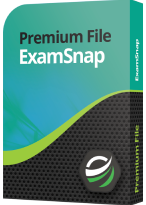
- Premium File: 359 Questions & Answers. Last update: Jun 20, 2025
- Latest Questions
- 100% Accurate Answers
- Fast Exam Updates
AWS Certified Database - Specialty Training Course
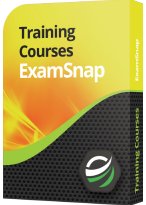
- Training Course: 275 Video Lectures
- Latest Questions
- 100% Accurate Answers
- Fast Exam Updates
AWS Certified Database - Specialty Study Guide
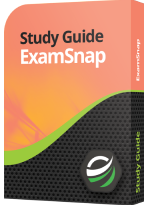
- Study Guide: 552 Pages
- Latest Questions
- 100% Accurate Answers
- Fast Exam Updates
Amazon AWS Certified Database - Specialty Training Course
Want verified and proven knowledge for AWS Certified Database - Specialty? Believe it's easy when you have ExamSnap's AWS Certified Database - Specialty certification video training course by your side which along with our Amazon AWS Certified Database - Specialty Exam Dumps & Practice Test questions provide a complete solution to pass your exam Read More.
Prepared by Top Experts, the top IT Trainers ensure that when it comes to your IT exam prep and you can count on ExamSnap AWS Certified Database - Specialty certification video training course that goes in line with the corresponding Amazon AWS Certified Database - Specialty exam dumps, study guide, and practice test questions & answers.

Amazon Training Courses




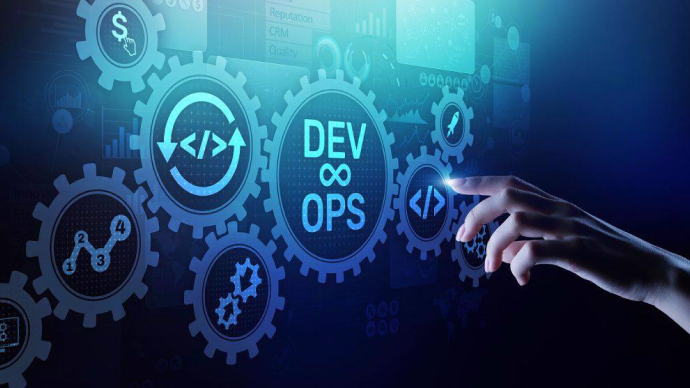

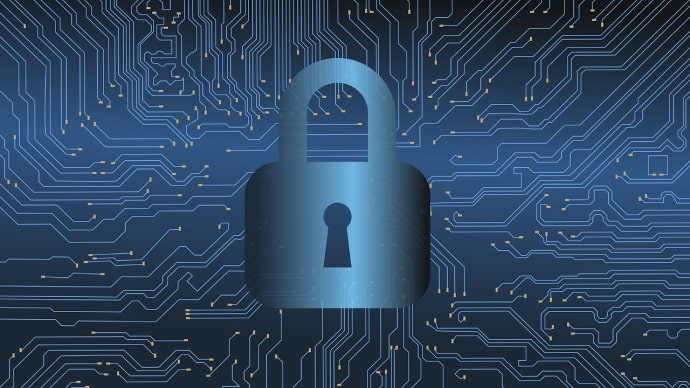




Only Registered Members can View Training Courses
Please fill out your email address below in order to view Training Courses. Registration is Free and Easy, You Simply need to provide an email address.
- Trusted by 1.2M IT Certification Candidates Every Month
- Hundreds Hours of Videos
- Instant download After Registration



